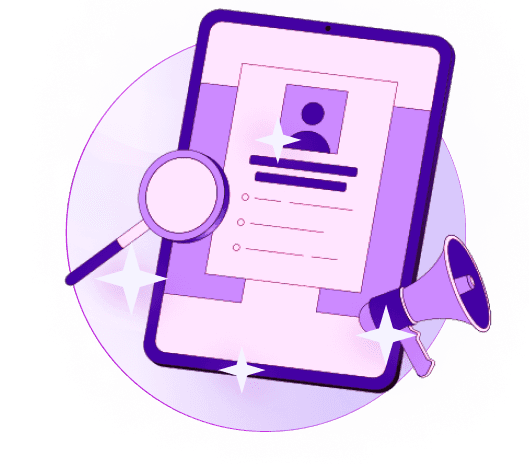Blogs
Articles

What is B2B Marketing Attribution?
Did you know that 58% of B2B marketers say their marketing analytics needs improvement or isn't good enough?
You're not alone if you struggle to link your marketing efforts to business results. B2B marketing attribution - tracking which marketing efforts generate revenue - isn't anywhere near simple.
This piece explores B2B marketing attribution, how it's different from B2C attribution, and the practical steps to create your attribution model.
What is B2B Marketing Attribution?
B2B marketing attribution tracks and assigns value to marketing interactions that drive revenue in business-to-business sales. This method helps marketers understand what truly leads to conversions. They can trace the exact path prospects take from their original interest until they sign contracts.
Marketing teams monitor and evaluate every touchpoint throughout the customer's experience. A full picture reveals which marketing efforts actually drive purchasing decisions. This knowledge leads to smarter budget decisions and better planning.
Two core defining elements set B2B attribution apart:
Multiple stakeholders make the buying decision—B2B customers are companies where several employees take part in the experience
Sales cycles stretch over months, with average cycles running between 6-12 months from first contact to closed deal
Standard attribution methods don't work well for B2B scenarios. To cite an instance, Google Analytics tracks individual devices instead of accounts. It keeps GCLID data for just 90 days—too short to capture the complete B2B buyer's experience.
How it is different from B2C attribution?
B2B attribution stands apart from B2C attribution by a lot because buying patterns are fundamentally different. B2C deals with individual customers who make quick decisions.
B2B attribution must track:
Longer sales cycles: B2C purchases happen on impulse, while B2B deals can take months or years
Multiple decision-makers: B2B purchases need procurement officers, technical experts, and senior executives who engage through various channels
Higher financial stakes: B2B deals involve bigger budgets and risks that need more detailed tracking
Account-level focus: B2B looks at entire accounts rather than individuals since multiple stakeholders in one organization make decisions
B2B attribution must also track online and offline channels. This includes webinars, whitepapers, social media, trade shows, and direct sales calls. Such complexity makes it harder to identify which touchpoints drive the final sale most effectively.
How to developing B2B Marketing Attribution?
B2B marketing attribution needs a systematic approach that recognizes complex B2B sales cycles. Here's how you can build a working attribution system:
Your first step is picking a single source of truth—a central database that records all marketing touchpoints in one place. This step removes any data inconsistencies that show up when combining multiple data sources.
A strong tracking infrastructure comes next. GA4 serves as a common tool, but it doesn't always give accurate B2B results. Your CRM might be a better option to track conversions back to their sources.
The next priority is gathering complete event data from your website, which includes visits, form submissions, content downloads and user interactions. This data gathering should cover online channels like paid media, website interactions, and email, plus offline activities such as events and direct mail.
Each lead needs a connection to its marketing channel through UTM parameters, referral data, cookies, or custom tracking. The next step unites all lead data from one company under a single account—this reflects how B2B purchases need multiple stakeholders.
How to Build a B2B Attribution Model?
A methodical approach works best when building a B2B attribution model. B2B buyers interact 36 times on average before purchasing, and some customer experiences include hundreds of online and offline touchpoints. Here's a look at six key steps to build a strong model.
1. Choose a single source of truth
A centralized database that records all marketing touchpoints helps eliminate data inconsistencies from multiple sources. This foundation will give you reliable attribution analysis through accurate data. An Extract, Transform, Load (ETL) solution can help combine data from different channels smoothly.
2. Track and collect event data
You need to monitor crucial interactions like page views, content downloads, form submissions, and webinar attendance. The right tracking codes on your pages will capture visitor behavior. Your tracking methods should stay consistent across marketing channels.
3. Connect leads to marketing channels
UTM parameters, referral data, or server-side tracking help link website leads to their sources. Privacy concerns are growing, so cookieless attribution methods can protect user privacy while giving you accurate data.
4. Combine data at the account level
B2B differs from B2C because multiple stakeholders from one organization get involved. Putting all lead data under a single account shows you how different touchpoints affect various decision-makers. Platforms like Persana.ai can spot multiple stakeholders in a business account and monitor their combined behavior.
5. Define and apply your attribution model
Pick an attribution model that matches your business goals—first-click, last-click, time decay, position-based, or linear. Each model weighs channels differently based on when interactions happen in the customer's buying process.
6. Visualize and analyze the results
Interactive dashboards give you a complete view of your marketing results. These visual tools help you find which channels bring conversions and spot patterns you might miss in raw data.
B2B vs B2C Marketing Attribution Differences
Marketers need to understand the clear differences between B2B and B2C marketing attribution to select the right strategies. These differences extend far beyond basic variations in approach.
B2B sales cycles can take months or even years, while B2C transactions wrap up in minutes or days. More than 71% of marketers believe customer experience optimization across multiple channels is significant. The process becomes complex because B2B decisions need multiple stakeholders—procurement officers, technical experts, and executives who interact with different marketing materials.
Both B2B and B2C want to boost sales, but B2B attribution must track non-linear decision-making processes. A B2C purchase follows a simple path: "clicks Instagram ad → visits website → makes purchase." B2B customers take many more steps: "visits website → reads product reviews → attends webinar → participates with sales → makes purchase decision".
B2B attribution faces challenges in tracking offline interactions like in-person meetings, phone calls, and trade shows. B2C attribution relies more on cookie-based tracking and digital footprints.
The financial stakes show dramatic differences. B2B purchases need larger investments, which makes accurate attribution vital to justify marketing spend. This calls for detailed attribution models that capture every touchpoint's value throughout the customer's extended trip.
How to implementing B2B Marketing Attribution Successfully?
Implementing b2b marketing attribution requires more than just model building. Quality data forms the foundation, as 43% of marketers point to poor data quality as their main obstacle to attribution success. Regular data audits help remove duplicates, fix inaccuracies, and maintain complete records.
Clean data and clear business-aligned objectives create strong attribution foundations. These objectives help determine your KPI tracking needs and the most suitable attribution model.
A detailed view requires both online and offline touchpoint integration. Matomo's marketing attribution feature includes six attribution models that compare results and go beyond basic last-click attribution. The right technology combined with mutually beneficial marketing and sales collaboration leads to attribution success.
The path to full implementation needs these key steps:
Standard data collection methods across channels
Clear touchpoint categories that maintain consistency
Tracking systems for digital and offline interactions
Interactive dashboard visualization of attribution data
Regular updates to attribution models as consumers change behavior
Platforms like Persana can unify your attribution data to learn about marketing efforts that generate revenue.
Conclusion
B2B marketing attribution is the life-blood of organizations that want to link their marketing efforts to revenue generation. In this piece, we've seen that B2B attribution is different from B2C models due to longer sales cycles, multiple decision-makers, and higher financial stakes.
Marketing teams need to know which touchpoints affect their bottom line to allocate resources properly. They work blindfolded without proper attribution and can't determine which campaigns deserve credit for results.
The six-step process we discussed earlier gives you a roadmap to build your own attribution model. A successful attribution strategy needs a single source of truth, complete event data tracking, and consolidated information at the account level. B2B purchases involve multiple stakeholders from one organization who interact with different marketing materials.
Data quality is the foundation of attribution that works, with almost half of marketers saying poor data is their biggest obstacle to success. Teams should conduct regular audits to maintain accurate attribution insights.
Companies with strong B2B marketing attribution get ahead of their competition. They base decisions on data instead of assumptions, understand their customers' trips better, and optimize their marketing spend on channels that drive real conversions.

Create Your Free Persana Account Today
Join 5000+ GTM leaders who are using Persana for their outbound needs.
How Persana increases your sales results
One of the most effective ways to ensure sales cycle consistency is by using AI-driven automation. A solution like Persana, and its AI SDR - Nia, helps you streamline significant parts of your sales process, including prospecting, outreach personalization, and follow-up.



